This Guns 101 article addresses shotguns shells. Included are three basic types of shotgun shotgun loads (slugs, buckshot, and birdshot):
Basics
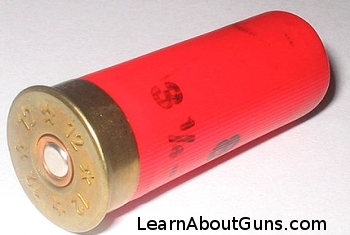
Shotgun shells are the type of ammunition fired by a shotgun. Nowadays, the base of the shell is commonly made from brass, with the remainder of the composed of plastic. Historically, paper and brass shells were the norm. In the base of the shell sits the primer, which is a small quantity of a shock-sensitive compound. Above the primer sits the gun powder. Next is the wadding, which can be broken down into three basic elements: the powder wad, the cushion, and the shot cup. The powder wad gives the hot gasses from the gun powder something to press against, allowing those hot gasses to propel the shotgun’s projectile(s) down the barrel and on to the target. The cushion helps, as its name suggests, cushion the projectile(s) against the sudden acceleration they experience as the gun powder burns, helping prevent the projectile(s) from being deformed under this stress. This is important, as a deformed projectile won’t fly as straight or penetrate as deeply into its target as a non-deformed projectile. Finally, there is the shot cup, which holds the projectiles. Some ammunition includes a buffer material in the shot cup, such as tiny styrofoam pellets, to further help prevent the projectiles from deforming one another as they travel down the barrel. The end of the shell is then crimped closed, so that the contents remain in place and protected from the elements. When the shell is fired, the pressure from the burning gun powder breaks the crimp open, allowing the projectiles to exit the shell and travel down the barrel.
The example clear shotgun shells below show the inner workings of a birdshot, buckshot, and finally a rifled shotgun slug shell:
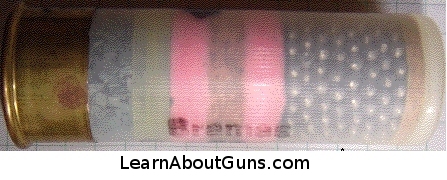
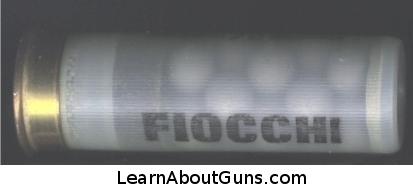
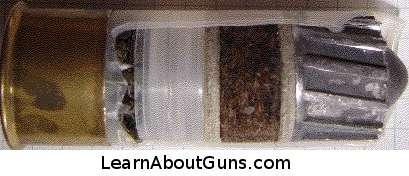
As the above pictures show, birshot shells have many small pellets, usually made from lead. These shells are suitable for hunting birds, breaking clay targets when trapshooting, self defense against snakes, and other situations where limited penetration of the target is appropriate. Birdshot is generally not suitable for self defense against humans, as the birdshot pellets will not reliably penetrate deeply enough to stop an attacker.
Buckshot shells have larger pellets, usually made from lead, and are suitable for deer hunting, self defense, and other situations where multiple projectiles that will penetrate deeply are needed.
Slugs are a single projectile, usually made from lead, and are much like a bullet. Rifled slugs differ from most bullets in that they are front-heavy, with a hollow base, while most bullets are rear-heavy. Having most of the mass near the front allows the rifled slug to be drag-stabilized while in flight, which is important because a rifled slug is not spun by the shotgun and must therefore drag-stabilize itself (a rifled shotgun slug is fired from a smooth-bore shotgun). A sabot slug is generally used in a shotgun with a rifled barrel, and has a sabot (the French word for “shoe,” pronounced “SA-bow”) which engages the groves in the shotgun’s rifled barrel, spinning the sabot and slug as they travel down the barrel. Some slugs are of the discarding sabot variety, meaning that the sabot separates from the slug shortly after the slug and sabot leave the barrel. Other slugs remain attached to their sabot up to the moment of impact. Sabot slugs are often rear-weighted and strongly resemble traditional bullets, with some manufacturers simply taking their existing rifle bullets, wrapping them in a sabot, and then placing the assembly into a shotgun shell.
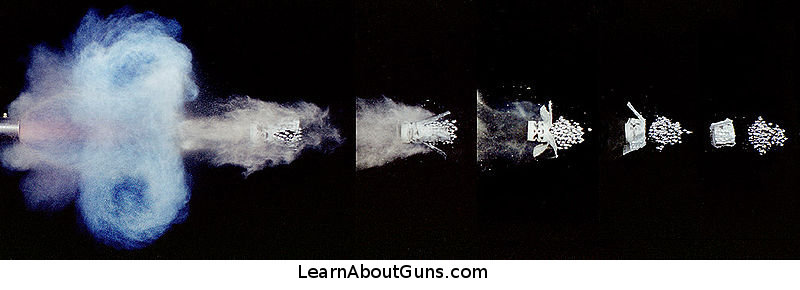
When the user pulls the shotgun’s trigger, the firing pin strikes the primer, causing it to explode and thereby ignite the gun powder in the shotgun shell. This burning gun powder generates hot gasses at thousands of pounds per square inch of pressure, which press up against the powder wad, driving it, the cushion, the shot cup, and the projectile(s) down the barrel and on toward the target. The picture immediately above this paragraph shows a birdshot shell being fired, and the shot separating from the shot cup after leaving the barrel (credit for the picture goes to Andrew Davidhazy).
funnny.
I have a 1187 non rifle barrel. What choke should Iuse for slugs?